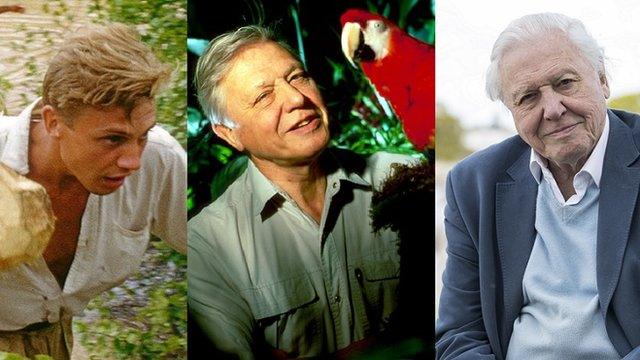Blue Planet II: What's happening in week two?
- Published

Sir David Attenborough will be back on our screens on Sunday night bringing us more Blue Planet II action.
Episode two is titled The Deep, so no prizes for guessing where we're going to be exploring this week!
That's right - the very bottom of the deepest, darkest parts of our oceans.
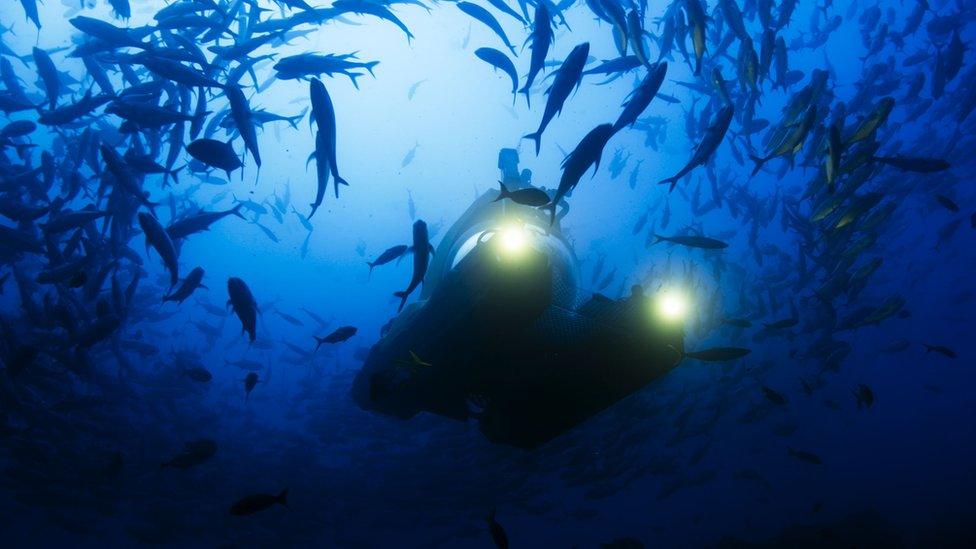
The deepest part of our ocean is almost 11 kilometres down and it is thought that what goes on there may hold clues to where all life on Earth comes from - so it's a pretty important place.
More people have been to the Moon than have been to the deepest parts of our oceans, making it one of the most unexplored places on Earth. So the Blue Planet team certainly weren't short of places to explore.
It's a very difficult place to film, as it is incredibly cold and completely pitch black. Some fish that live here even have antifreeze in their blood to stop them from freezing.
In fact, it used to be thought that it was impossible for life to exist here. But scientists now believe that, in fact, there is more life down in the deep than there is anywhere else on Earth.
Because there is SO much water above you if you go that deep, the pressures are extremely high, so you have to use very special equipment to get down there and film.
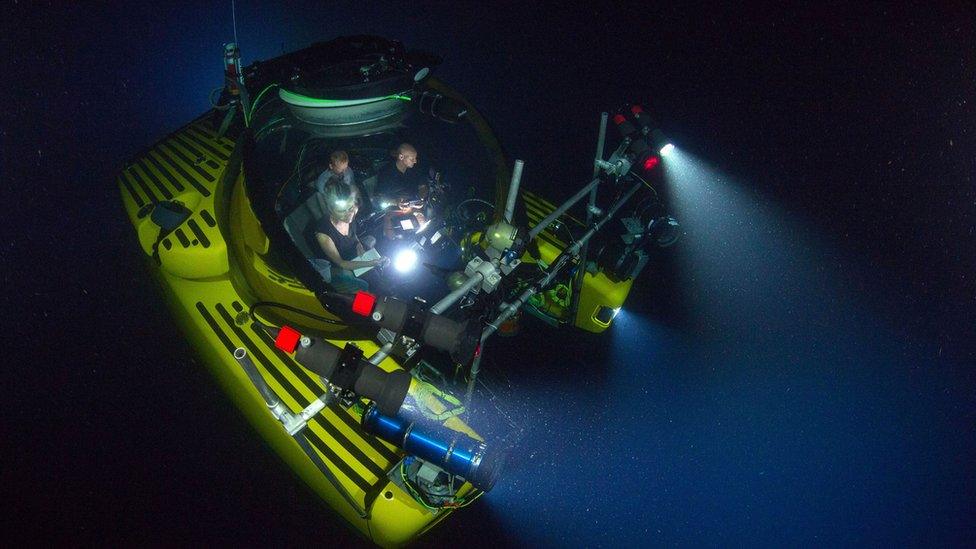
Crews spent 1,000 hours in these amazing machines called submersibles in order to film episode two
In order to shoot this episode, the team spent 1,000 hours in special deep-water machines called submersibles, which allowed the crew to film hundreds of metres underwater - sometimes in places that have never been filmed before.
So what will we be seeing in this episode?

Weird and wonderful creatures
When you go that far down in the ocean, you can find fish that walk instead of swim, hair-covered crabs, worms that eat bones, and shrimps that spend their lives imprisoned in sea sponges.
So, rest assured, you will be seeing plenty of strange-looking animals in this episode that you won't find anywhere else on our planet.

This sea-toad was filmed in the deep waters of the Gulf of Mexico. It sits on the seafloor waiting for a meal to come towards it. You can see its fins have evolved into feet!

Savage groups of squid hunting in the depths
In this episode, hunting packs of Humboldt squid are seen 800m underwater for the first time ever!
They are vicious predators with eight arms and two long feeding tentacles, each covered in hundreds of tooth-lined suckers.
They are also cannibals and will happily eat smaller or injured members of their own species, if they need to. Eek!
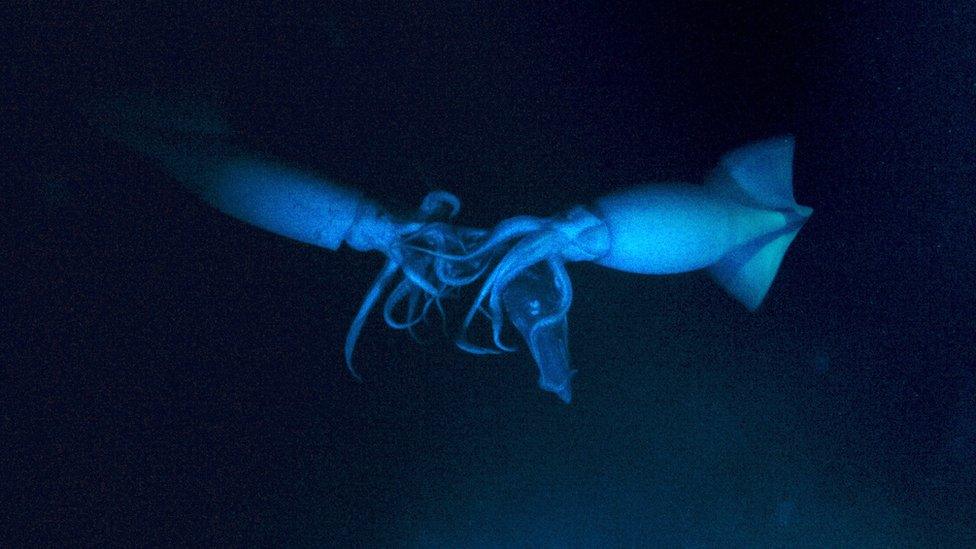
Off the east coast of Chile, the Blue Planet team filmed these Humboldt squid hunting - something that has never been done before

Amazing gardens growing in the pitch black
It's hard to imagine that anything would be able to grow in such harsh conditions.
But this episode will show how life really can flourish deep down in the oceans.
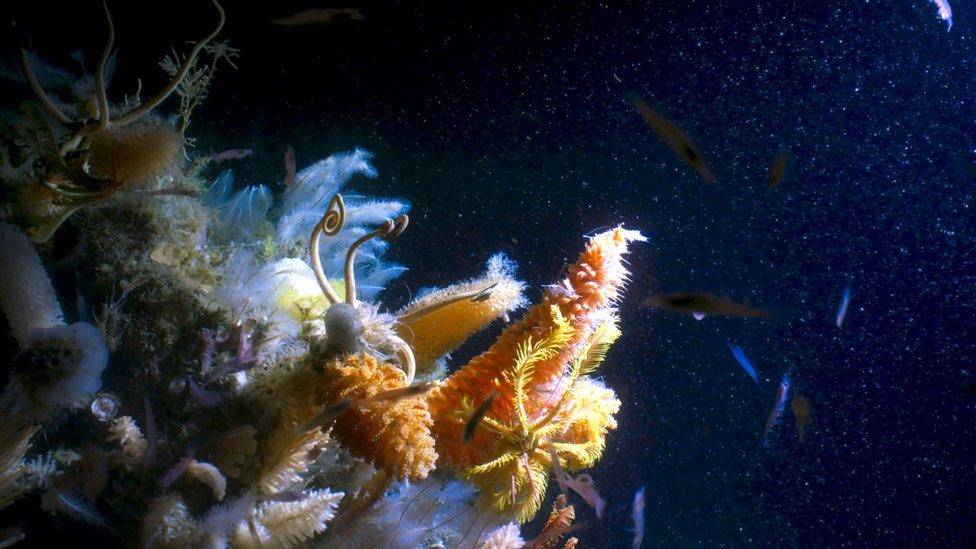
These giant sponges are seen growing in the deep waters around Antarctica

Sharks fighting for their first meal in a year
Bluntnose sixgill sharks patrol the seabed hundreds of metres down. They move extremely slowly, as they scour the seabed for food.
This is so that they save energy, as scientists believe they can sometimes only eat once a YEAR.
Can you imagine how hungry you would be?! Well, in this episode we're going to see what happens when they finally come across a whale carcass...
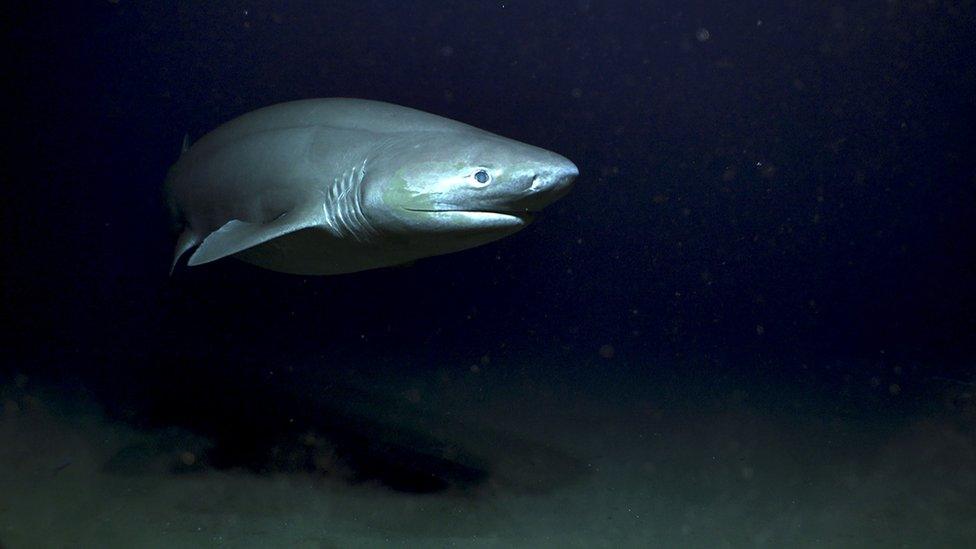
Bluntnose sixgill sharks can go up to a year in between meals

Underwater volcanoes that may hold the secret to life
You might be used to seeing volcanoes on dry land.
But did you know that over 75% of all of the volcanic activity that happens on Earth actually takes place deep underwater?
Most of this happens in an area called the Mid Ocean Ridge, which - at 50,000 miles wide - is the largest natural structure of its kind on the planet.
This week, Blue Planet II will be taking us there.
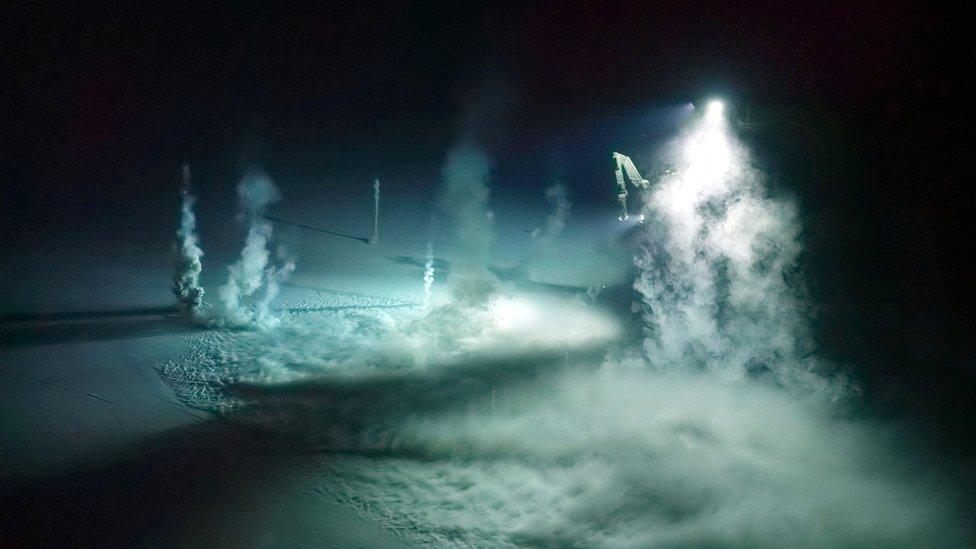
The team managed to capture this underwater volcanic eruption just the once. When they went back to film it again the next day, the volcano was dormant - and they never saw it erupt again. How lucky!

Fish with the largest teeth in relation to its size
The fangtooth has the largest teeth in relation to body size of any fish.
Check them out! We will be meeting them on Sunday too.
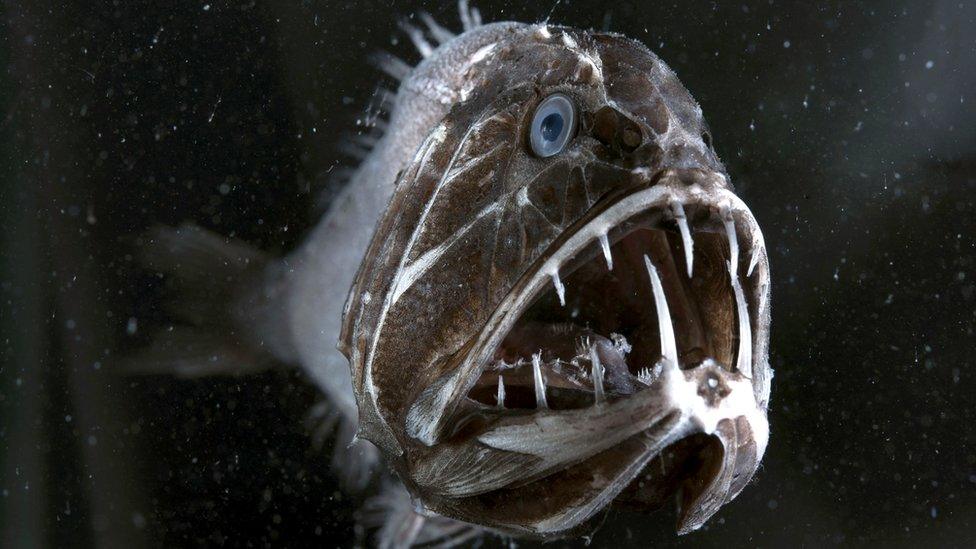
The fangtooth has the largest teeth relative to its body size of any fish in the entire ocean
- Published30 October 2017
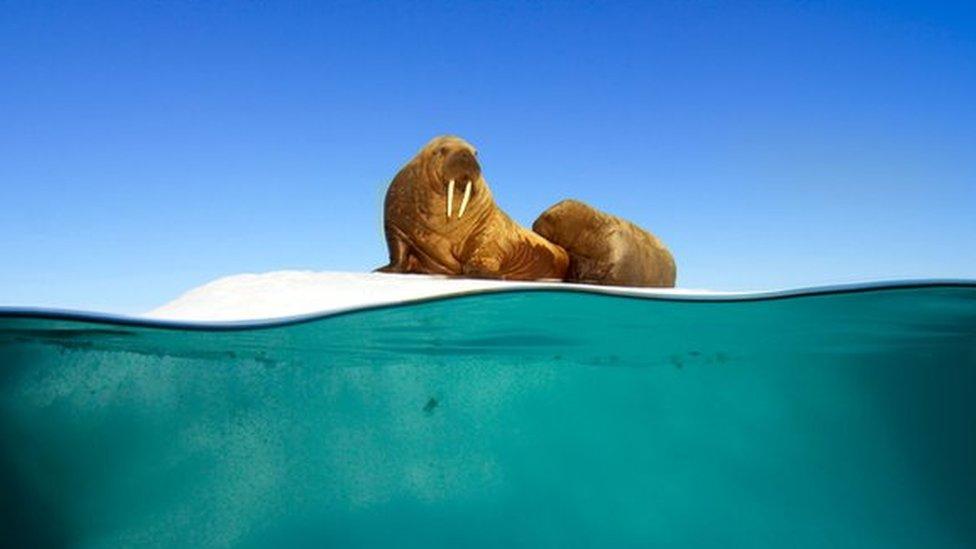
- Published27 September 2017

- Published8 May 2016
